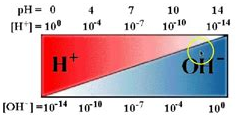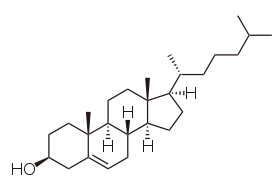Biology
links: !Botany, !Ecology reference:
- https://derangedphysiology.com/main/home
- https://step1.medbullets.com/
- https://bio.libretexts.org/Bookshelves/Biochemistry/Fundamentals_of_Biochemistry_(LibreTexts) this one MOGS
- https://lotus.naturalproducts.net/ pubchem-like site for natural compounds
- https://www.genome.jp/kegg/pathway.html insane directory of in-depth diagrams of metabolic pathways. No molecular structures though.
- https://pathbank.org/
- https://thebumblingbiochemist.com/graphics/
- https://proteinlounge.com/pathway.php
- https://www.cusabio.com/pathway.html - this might be my favorite so far
-
http://www.kinasenet.ca/ and its sister sites, AND what the parjpges link to: great place to search for any gene. Not comprehensive though - actually misses a lot.
- https://string-db.org/ amazing for cross-referencing interactions (it’s like obsidian graph view) to find key genes, but no context. No phosphorylation sites.
- Biology transcends the limits of computation
- http://orthomolecular.org/library/jom/index.shtml truly amazing. 40 years, sort by quarter, and half a dozen or so each quarter.
-
https://kevinbinz.com/2022/08/18/the-pace-of-life/
- Evolution of the Basal Ganglia (lots of paleontology notes)
- r/K selection ( The Pace of Life)
- Bionumbers
Biology MOC #
- I’m kinda confused with A-level/Bio 101 type stuff has so much to do with genetics and the cell cycle. Who cares?
- https://bio.libretexts.org/Bookshelves/Biotechnology/Lab_Manual%3A_Synthetic_Biology_Protocols
Random vocab #
- Interoception
- Analgesic: Medicine which reduces pain, especially without inducing a loss of other sensation.
- Ontogeny: Origination/development of an organism from time of fertilization unto adulthood.
- Allostasis: Anticipating needs and preparing to satisfy them before they arise, as opposed to during, in the case of homeostasis.
- Salutogenic: As opposed to pathogenic; an emphasis on arbitrarily improving health, rather than preventing disease
Etc #
-
Intracellular pH Regulation
- Mitochondria maintain an internal pH of 7.5, about 0.5 unit more alkaline than pHi
Systems Biology #
Barbieri #
The Organic Codes: An Introduction to Semantic Biology (2003) #
- Most theories on the origin of life. are but variations on two basic themes: the metabolism-first paradigm proposed by Oparin and the replication-first paradigm of J.B.S. Haldane. This is because every organism is conceived as a duality of genotype and phenotype (software and hardware)
- But in fact, there is also the ribotype.
Introduction to Biosemiotics (2006) #
Semiosis is a fundamental property of biology.
Code Biology - a new science of life (2015) #
The Systems View of Life #
6 Complexity theory #
15 The systems view of health #
- *Despite a staggering increase in healthcare costs over the past decades, and amidst astonishing advances in diagnostic techniques and surgical procedures, the overall health of the population does not seem to have improved significantly (see World Health Statistics published annually by the World Health Organization (
www.who.int)…
-
See also Human frontiers, environments and disease Past patterns, uncertain futures (McMichael 2001) #
-
- it was soon discovered that there is a huge gap between the ability to identify genes that are involved in the development of disease and the understanding of their precise function, let alone their manipulation to obtain a desired outcome. This gap is a direct consequence of the mismatch between the linear causal chains of genetic determinism and the nonlinear genetic and epigenetic networks of biological reality, as we discussed in Section 9.6.4.
Biophysics #
- WHAT IS LIFE - Sub-cellular Physics of Live Matter (Niemi 2014) Introduction to the physics of proteins. Cool pictures.
Principles of Bioenergetics (Skulachev) #
- 15.1 Nature of ROS and Paths of their Formation in the Cell
- Almost all oxygen consumed by living organisms is transformed into water. This is thanks to Cytochrome C Oxidase. But <2% is turned into superoxide or H2O2.
- Wouldn’t be so obvious if you asked me, compared to CO2.
- Almost all oxygen consumed by living organisms is transformed into water. This is thanks to Cytochrome C Oxidase. But <2% is turned into superoxide or H2O2.
- 16.1 SkQ Decelerates the Aging Program
- This guy Skulachev developed SkQ1
- Eye drops were used for treatment of uveitis and glaucoma in rabbits, and for autoimmune blindness.
- Canceled graying of hair in radiation-induced progeria (rapid premature aging (like the kids in Akia))
Alberts #
- There seems to be every chapter for flashcards on quizlet; hundreds of cards each - and there has to be a quizlet-> anki converter for that ;)
-
Based: Enjoying the responses “oh we read it in first year” I’m not sure my approach to reading would survive that. I’ll read a page, and find myself working through 9 Wikipedia pages, 4 papers, and a couple of YouTube videos, plus 50 Anki cards….
- A week or 2 per chapter, taking like 3 months total? Recommended to have basic biochemistry, organic chemistry, and maybe some genetics.
Campbell #
Capbell TOC but it’s basically all the same for Bio I textbooks. There’s almost nothing here at this point.
2. the chemical context of life #
- The number of electrons required to complete an atom’s outermost shell is known as its valence.
- The attraction of a particular atom for the electrons of a covalent bond is its electronegativity.
- Photosynthesis: $\ce{6CO2 + 6H2O -> C6H12O6 (Glucose) + 6O2}$
Ionic Bonds #
- NaCl is a good example. Na naturaly has 1 of 8 valence electrons, and Cl has 7 of 8. Na gives one to Cl, and that gives Na a positive charge, Cl a negative one. This will form a bond. The atoms in an ionic bond do not need to have acquired their charge via electron transfer with each other.
- This doesn’t sound any different than covalent bonds though? Compounds formed by ionic bonds can be called ionic compounds, or salts! Holy shit! So, something tells me it’s mainly the electrolytes that have ionic bonds.
- An ionic compond does not consist of molecules, only ratios of elements.
8. Metabolism #
$G= G_{final} - G_{initial}$. A ‘positive’ Gibbs free energy means that energy was added to the reaction. Negative obvs means the converse - it was released, as heat I assume, in every circumstance?
Biotechnology and its Applications #
3. Proteins #
https://en.wikipedia.org/wiki/Transmembrane_protein#Classification_by_Topology interesting stuff
pKa #
-
$pK_a$ is the pH at which an ionizable species is $\geq$ 50% ionized.
-

- The carboxyl on glutamic acid has for instance a pka of ~4.15, meaning it (verily easily loses/very much requires) H+ for whatever reason. So at physiological pH, it will be almost all glutamate.
- But does it not just form a zwitterion? For almost every amino acid, the pka of the amine is $pK_a$ 8.76 minimum. The isoelectric point of a molecule is the pH at which the predominant net charge is zero; in this case.
-
-
What I’m not sure about is how this relates to zwitterions?
- I’m assuming all amino acids are zwitterionic at neutral (correct) before it transitions to a negative charge in alkaline environments where the amine dissociates from an additional H+.
- The resulting charges are all relative though. Only some amino acids like lysine can actually be positively charged, due to an additional amine on the R chain.
- I’m assuming all amino acids are zwitterionic at neutral (correct) before it transitions to a negative charge in alkaline environments where the amine dissociates from an additional H+.
-> Protein Folding #
Advanced Nutrition and Human Metabolism #
1. the cell: a microcosm of life #
- Membranes with higher levels of Cholesterol are less fluid.
-
 The hydrocarbon side chain associates with those of the Phospholipids, with C’s hydroxyl group(s?) positioned close to the polar heads:
The hydrocarbon side chain associates with those of the Phospholipids, with C’s hydroxyl group(s?) positioned close to the polar heads:
 .
.
- Yeah, I suppose one hydroxyl is less polar than multiple.
- It separates the lipid tails of phospholipids.
-
3. carbohydrates #
Bioinformatics #
-
Rosalind is a platform for learning bioinformatics and programming through problem solving.
-
https://www.biostars.org/p/184551/ has a couple links for tutorials
- Learn R and something like python. Trust meh.
-
https://yewtu.be/playlist?list=PLhR2Go-lh6X5A5WbiO3SPHuoWbwpNznUl
-
Debian packages: https://blends.debian.org/med/tasks/bio
-
https://www.mozak.science/ neuron sitmulator game thing
-
The Genomic Research Center Computational Oncology group (GRC-CO) at Client is seeking a highly motivated computational biologist/bioinformatics scientist to play an integral role in a multi-disciplinary team focused on developing new therapies for the treatment of cancer… They will be responsible for formulating scientific questions into coherent analytical efforts, developing rigorous statistical modeling and bioinformatics methods, integrating large scale multi-modal datasets to derive quantitative biological insights, and communicating scientific findings to project teams.
-
file:///home/Downloads/BINF%20Career.pdf